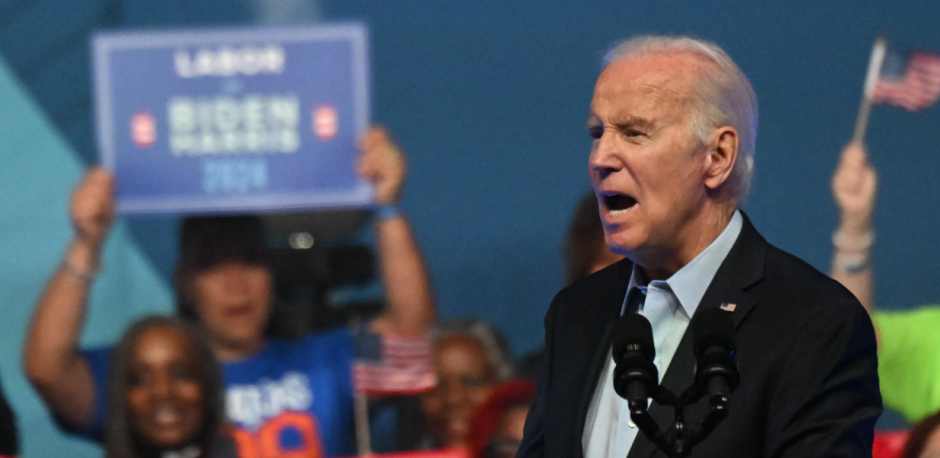2023 left investors with some hope more than anything else.
Through a lot of 2022 and 2023, the Federal Reserve (Fed) kept raising interest rates to combat rising inflation. But, even with inflation trending close to the Fed’s 2% target for most of the second half of 2023 (the latest figure for February being 3.2%), interest rates have stayed at a 23-year high.
Higher interest rates can help lower inflation, but it comes at a cost for the rest of the economy. Higher rates encourage saving, it also makes mortgages and loans more expensive, and this can discourage businesses from investing and expanding. All this is bad for the economy.
With that in mind, the US economy is only expected to grow 2.1% in 2024 down from 2.5% in 2023. This is well behind developing markets like India and China. So, with slowing growth and falling inflation, investors were going into 2024 with the expectations of not just rates cuts but that they would be early in the year.
The consensus has now changed. The US economy continues to be resilient. This time last year we were talking about the inevitability of a deep recession. Now expectations point to a shallow recession or even no recession at all.
In the last quarter of 2023 the economy grew 3.3%, ahead of expectations. This, combined with a strong job market, has led to investors expecting just three rate cuts in 2024 instead of the six they were expecting in January.
The timing of these cuts has also changed.
Before, the first one was expected to be this month. But now it’s expected to be in the summer.
A Trump and Biden rematch
Both Donald Trump and current President Joe Biden have dominated the republican and democratic primaries. This was especially true on ‘Super Tuesday’, the day most states vote for their party representative in the next election.
Both Biden and Trump performed strongly and now have the required number of delegates to represent their parties in the next presidential election.
Tech continues the rally
After a strong 2023, the technology sector has continued rallying in the first quarter of 2024.
Nvidia, the computer hardware maker, has been leading the way. In February, it beat expected earnings results and at the time of writing the share price has jumped significantly.
And they aren’t the only tech stock names that have done well. Advanced Micro Devices (AMD) and Uber Technologies have also rallied.
It’s hard to know whether this rally can keep going, or if returns from the stock market will come from a broader set of companies. But if advancements in artificial intelligence (AI) continue, there’s no telling how far they could go.
How have the US Wealth Shortlist funds performed?
Investing in these funds isn’t right for everyone. Investors should only invest if the fund’s objectives are aligned with their own, and there’s a specific need for the type of investment being made. Investors should understand the specific risks of a fund before they invest, and make sure any new investment forms part of a diversified portfolio.
This article isn’t advice. Investments and any income from them will rise and fall in value, meaning you could get back less than you invest. If you’re not sure if an investment’s right for you, ask for financial advice. Remember, past performance isn’t a guide to the future.
For more details on each fund and its risks, you can use the links to their factsheets and key investor information below.
Baillie Gifford American
The strongest performer of our Wealth Shortlist US funds over the last year was the Baillie Gifford American fund.
The fund rose 31.44%* over the past 12 months, outperforming the IA North American sector average. Past performance isn’t a guide to the future. Performance was helped by the fund's ‘growth’ style of investing coming into favour in 2023.
The fund had a difficult 2022 with interest rate rises and spiralling inflation prompting investors to move away from stocks with high growth potential. But as the outlook for inflation and interest rates improve, it could be a tailwind for growth investors.
The fund also holds a number of stocks that could benefit from the advancements in AI. Investors have taken a view that AI will help businesses become more efficient and offer a better service to customers. And so far this year we’ve seen a number of these companies’ share prices skyrocket.
The fund aims to outperform its benchmark over five-year periods, with a concentrated portfolio, including some exposure to smaller companies. Both of these factors increase risk. The fund’s significant growth focus can also lead to periods of ups and downs.
28/02/2019 To 29/02/2020 | 29/02/2020 To 28/02/2021 | 28/02/2021 To 28/02/2022 | 28/02/2022 To 28/02/2023 | 28/02/2023 To 29/02/2024 | |
|---|---|---|---|---|---|
Baillie Gifford American | 14.24% | 120.08% | -31.73% | -23.08% | 31.44% |
IA North America | 8.33% | 25.07% | 14.02% | 1.18% | 20.71% |
FTF Royce US Smaller Companies
The weakest performer over the past 12 months was FTF Royce US Smaller companies, returning 5.51%. Past performance isn’t a guide to the future.
Although the fund did outperform the Russell 2000 index which returned 5.33%, it marginally underperformed the IA North America Smaller Companies sector average which returned 5.95%.
The fund can have a concentrated portfolio including exposure to smaller companies. Both of these factors increase risk.
We don’t expect all the funds on the Wealth Shortlist to perform in the same way. We think it’s important for investors to build a portfolio filled with managers who have different approaches and investing styles to help generate long-term returns.
28/02/2019 To 29/02/2020 | 29/02/2020 To 28/02/2021 | 28/02/2021 To 28/02/2022 | 28/02/2022 To 28/02/2023 | 28/02/2023 To 29/02/2024 | |
|---|---|---|---|---|---|
FTF Royce US Smaller Companies | -0.67% | 35.66% | 3.2% | 13.97% | 5.51% |
IA North American Smaller Companies | 3.74% | 39.11% | -1.13% | 2.58% | 5.95% |
Russell 2000 | -0.99% | 37.95% | -2.06% | 4.16% | 5.33% |




